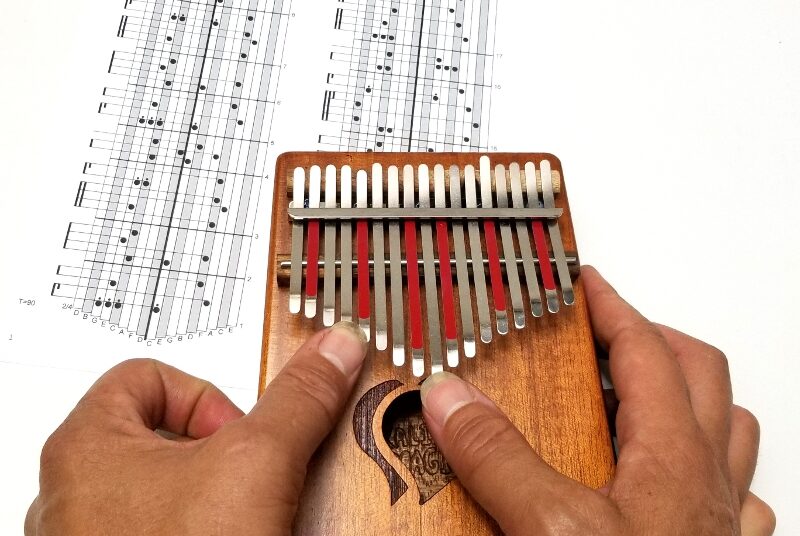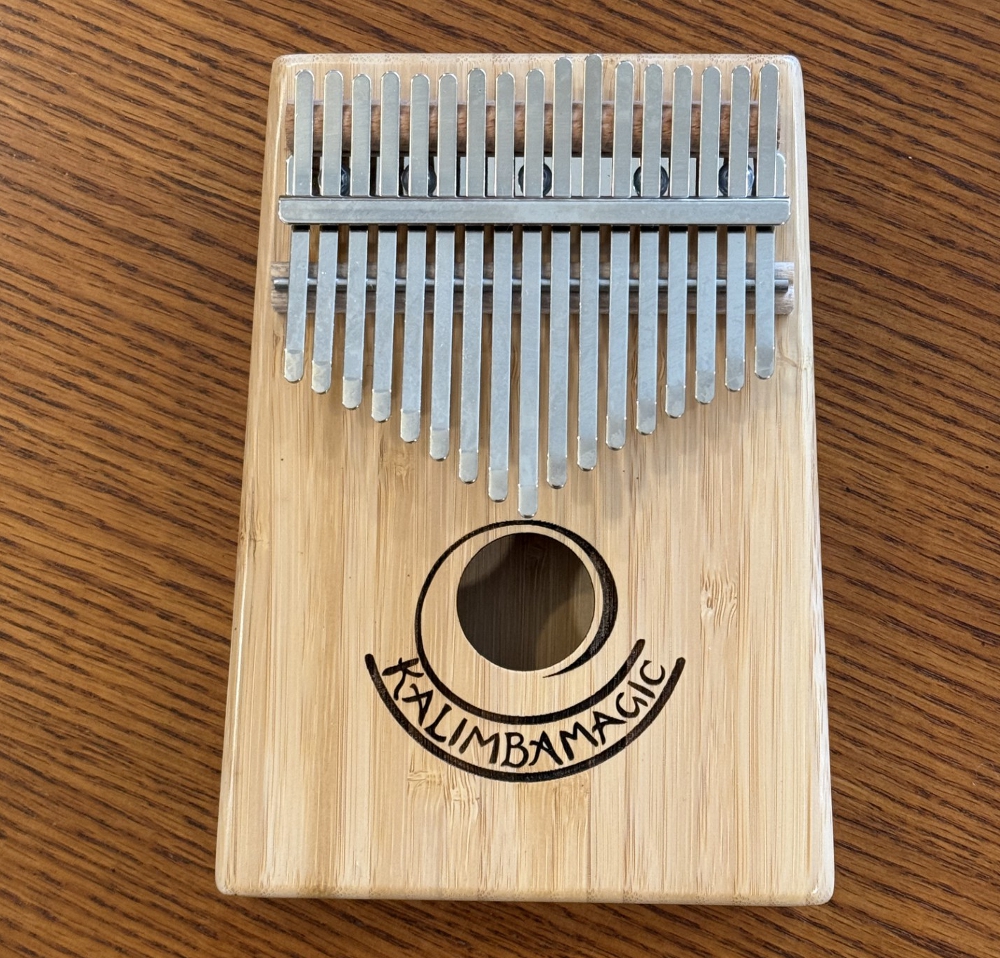
Use of this website constitutes acceptance of the Privacy Policy and User Agreement. Copyright © 2020 Kalimba Magic. All Rights Reserved.
The kalimba is one of those amazing instruments that magically sounds good even if you don’t know what you are doing, often right out of the box. However, if you practice, you can become really good at playing. I have compiled some thoughts on my experience of practicing on the kalimba with the idea of helping you with your kalimba journey.
If you are going to “get good” on the kalimba, you should try to play it a bit every day. Do it for 15 minutes a day. Once in a while, you will probably really get into playing, and 60 minutes will go by before you realize it. Playing 15 minutes a day will keep you from sliding backward and will help you be comfortable with the instrument, but it’s the days when you play a lot that will really help your playing improve.
A key aspect of practice is that you be physically relaxed. Most people find the kalimba to be relaxing, though some people can get uptight from looking at the tablature, a distinctly “left-brain” approach to learning kalimba. If something makes you uptight when you try to practice kalimba, change it. You can come back to the tablature, or learning specific songs or riffs, after you have established a good relationship with your kalimba.
And try to practice in a place that is not highly distracting, one where you can relax and not worry about how you sound.
I try to make practicing kalimba a spiritual practice, a practice about peace, love, self-improvement and self-reflection. I find that it works best when I can cultivate a detachment of mind. Early in one’s playing, you will find that at any given moment you are focusing on the left thumb, or on the right thumb. Try to take a higher perspective that detaches from the duality of left and right, but sees the two as part of something bigger. Try to sit at this higher level, and you will find that you experience both, left and right, but as a unity, not a duality. From this higher place, you can decide “I’m going to shift this thumb a wee bit to the right just at that place in the phrase.” Or, even better, if you can let your thumbs off the leash to try something new of their own design, then your relaxed, higher mind will have a much better chance of observing and understanding what your thumbs just did. If it sounds good, keep doing it, and try to remember what it is you did.
One way to remember what you did is to write it down in tablature. Writing something out means first analyzing the individual thumb motions with your mind, and then going into that place where you can sequentially write out the thumb motions with notes on paper. It is sort of the opposite of the detached, higher kalimba mind we just wrote about, but it is a great mental exercise to be able to go back and forth between these two.
And here’s a little advice: If you are going to come back to your kalimba day after day, you have to love your kalimba. If you have an instrument that you don’t love, you should look for a different one. A great place to explore the many different sorts of kalimba is in the Buyers Guide (see below for link).


Sign up for our newsletter and free resources with your email address:
We pinky promise not to spam you and to only send good stuff.
 Seek to Infuse Your Musical Moments With Beauty and Magic
Seek to Infuse Your Musical Moments With Beauty and Magic Kalimba Magic – We Give You The Tools You Need to Succeed
Kalimba Magic – We Give You The Tools You Need to Succeed Back in Stock! The Bamboo-17 Kalimba
Back in Stock! The Bamboo-17 KalimbaUse of this website constitutes acceptance of the Privacy Policy and User Agreement. Copyright © 2020 Kalimba Magic. All Rights Reserved.